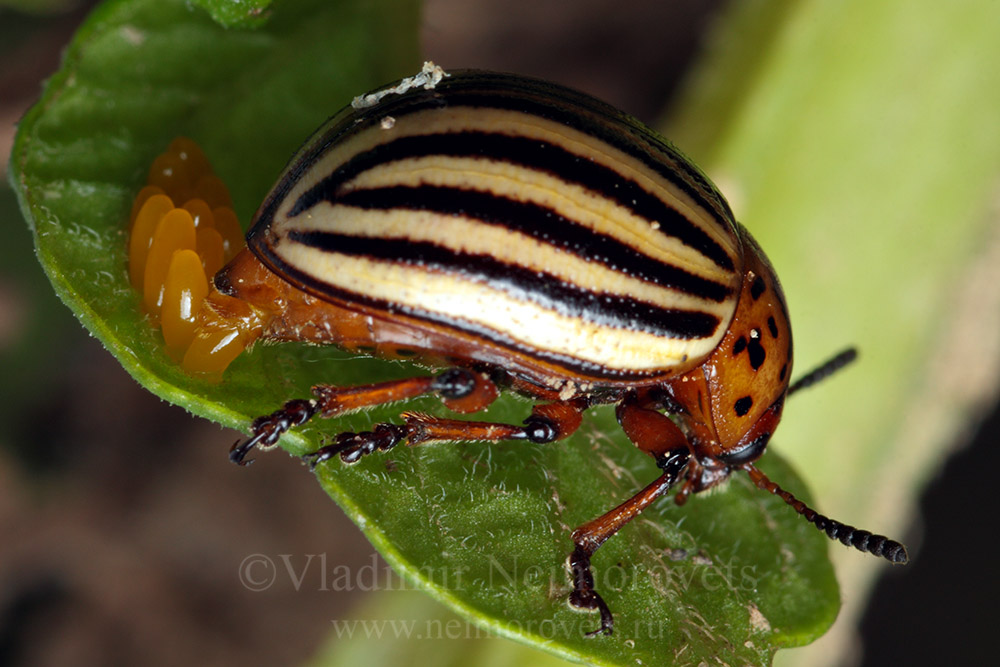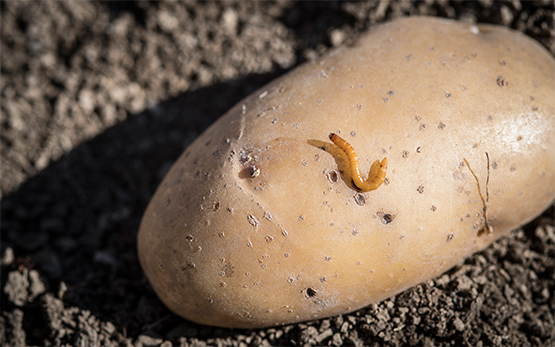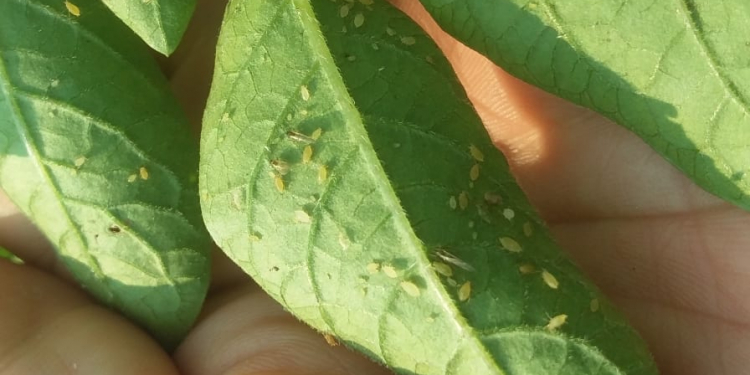The insect monitoring network in potato fields I operate across Washington’s Columbia Basin provides growers information about where and when insect pests are showing up in the region and warns them about potential pest problems.
Here are a few tips for scouting potato fields for insect pests.
Know Your Insect Pests
It’s important to be familiar with how insect pests common in your region behave.

For example, Colorado potato beetles overwinter in the soil in the previous year’s potato fields. They emerge in the spring and can fly several miles in search of host plants, but usually end up in the nearest potatoes they can find. If you know where they were last year, you should have a head start in watching for them this year. If there are tomatoes, eggplant, peppers, tobacco, or nightshades around, they may also end up on those plants.
Insect handbooks that describe seasonal development, host preferences, and overwintering habits can give you clues about where and when to direct scouting efforts.
Identifying Insect Pests
It’s difficult to scout for an insect pest if you can’t recognize it. Some insects are easy to identify, and some are challenging.
Insect identification guides can be helpful. You can also ask an expert to train you to identify the key pests in your region.
In the Columbia Basin, the only leafhopper that causes major problems in potatoes is the beet leafhopper. Unfortunately, there are a lot of similar-looking leafhoppers that are just as common. They are tiny insects, so you need a magnifying lens to make out some of the beet leafhopper’s characteristic features (a rounded head and lack of spots on the head and wings).
Monitoring Methods
We use several methods to monitor insects in potato field?
Sticky traps and water pan traps are good to detect insects that are moving into potato fields (usually winged, adult insects). These traps often use color to attract insects (yellow is the most common), or they may include a pheromone lure that entices males for mating.
In most cases, these traps should be retrieved and replaced weekly. Look for monitoring guides that explain how and where to deploy traps since placement can be crucial and depends on which insect you are looking for.
Do a physical examination. It’s important to know the limitations of your monitoring methods. Sticky traps can be a good way to learn when pests like aphids and potato psyllids are moving into a field, but they do not help us know if a field has become infested or if control measures are working. That usually requires examining plants for insects.

For example, when monitoring for potato psyllids, it is important to examine leaves for immature life stages (eggs and nymphs). If you find them, then you know the adult psyllids that migrated into the field survived to reproduce. If you applied an insecticide to control psyllids, but they still managed to colonize the field, you will want to consider what might have gone wrong (poor timing, product choice, etc.).
Check the soil. When scouting potato fields for insect pests, pay attention to signs that pests are present. Look for chewing holes, scarring, and other indications of insect feeding. Cutworms are caterpillars that mostly feed at night. If you find ragged holes in the leaves but do not see a pest, then pull back the potato vines and look for cutworms on the soil surface.
Watch for an increase in beneficials. A good field scout should know how to identify beneficial insects that prey on other insects. Large numbers of beneficials are a sign that pests are also abundant. We often notice a rise in the number of ladybird beetles in fields that are having aphid flare-ups.
Pay Attention to Area Crops
Think about the surrounding crops and weeds when you are scouting potato fields for insect pests. A nearby potato crop can be an important source of insects. Pay special attention to the part of your field that is nearest to other potatoes. This can be a good place to locate sticky traps that will alert you to inward-bound insects. It is particularly important to be watchful if your neighbor’s potatoes are vine killed or harvested before yours.
Alfalfa hosts a lot of insects that can be pests of potato, like aphids, blister beetles, cutworms, armyworms, and lygus bugs. Every time alfalfa is cut, nearby potato growers should be alerted to potential insect migration.









